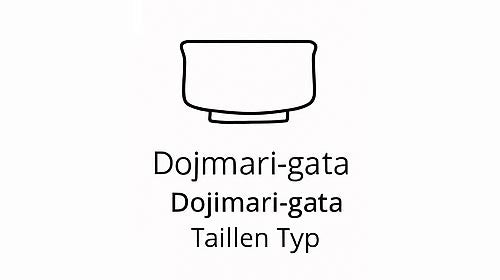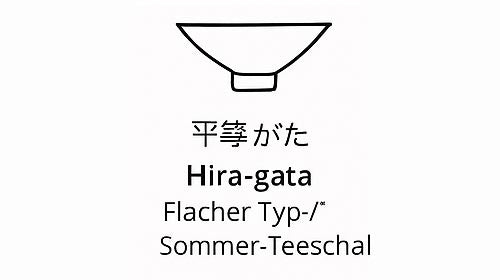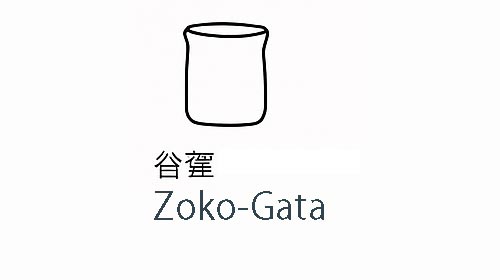The Dojimari-gata chawan is like a silent inward movement. Its strikingly narrowed rim encloses the tea, almost protectively—an architectural symbol of seclusion and concentration. "Dojimari" (胴締まり) literally means "narrowed at the body" or "constricted in the middle," with "dō" referring to the body or belly of the bowl and "shimaru" the narrow convergence.
This bowl symbolizes a moment of concentration, of gathering , as is often sought in the tea path - especially in Koicha ceremonies or in very quiet contexts.
Form & Structure
The Dojimari-gata has a bulbous body that tapers noticeably toward the top . The rim is closed, almost like a collar, which limits the view into the bowl while simultaneously focusing it. This design reduces the opening, keeping the aroma inside and retaining the heat.
The form is both functional and psychologically effective: it directs attention inward – to the tea, the moment, the silence.
Origin & historical development
The Dojimari-gata developed as a deliberate counter-form to the open Hira-gata and was particularly valued in the Wabi-cha schools . In the late Muromachi and early Edo periods (16th–17th centuries), it was developed in Kyoto workshops, particularly in Raku-yaki.
Famous tea masters such as Sen no Rikyū preferred this form for certain ceremonies that emphasized concentration, reduction, and formal structure. It was also considered particularly suitable for receiving honored guests, where the deepest form of attention and concentration was required.
Production & Glaze
Dojimari-gata is preferably made using raku pottery , as this firing method allows for subtle, hand-formed modulations. Variations also exist in Shigaraki , Karatsu , and modern Mino workshops.
Typical features:
-
Dark, matte glazes , such as Kuro-Raku or rustic Oribe
-
Often slight ash or brushwork visible
-
The clay is often coarse-grained, the glaze rather irregular – which contributes to the organic effect of the form
The kodai (base) is usually slightly inward-facing and often medium-high. Its function is not merely static—it gives the bowl the necessary stability to stand securely despite its top-heavy nature.
Practical use
The Dojimari-gata is a classic bowl for koicha , the thick matcha. The narrow opening reduces surface evaporation, while the deep bowl retains the concentrated flavor.
Typical application contexts:
-
Formal Koicha ceremonies
-
Two-person ceremonies with a special focus on collection
-
When using particularly high-quality Tencha , which is concentrated in aroma and taste due to the closed form
Symbolism & Effect
This bowl symbolizes condensation, concentration, and a return to the essential . It is not an object of exchange, but of contemplation . Its construction creates a quiet intimacy—between tea and drinker, but also between host and guest.
In Japanese aesthetics, it is associated with the principle of “sei” (静) – silence, not as absence, but as complete presence in the moment.




Leave a comment
This site is protected by hCaptcha and the hCaptcha Privacy Policy and Terms of Service apply.